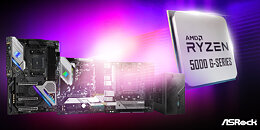
AMD EPYC Processors Power Mercedes-AMG Petronas Formula One Racing Team
AMD and the Mercedes-AMG Petronas Formula One (F1) Team today showcased how AMD EPYC processors improved aerodynamics testing capacity, contributing to the Mercedes-AMG Petronas team winning its eighth Constructors' Championship in the 2021 racing season. By using AMD EPYC processors, the team was able to achieve a 20 percent performance improvement for computational fluid dynamics (CFD) workloads that were used to model and test aerodynamic flow of their F1 car.
"We are proud to partner with the reigning Constructors' Champions, the Mercedes-AMG Petronas Formula One Team, operating at the cutting edge of racing and technology," said, Dan McNamara, senior vice president and general manager, Server Business Unit, AMD. "For F1 teams, having the most effective computational analysis of aerodynamics can mean the difference between winning and losing a race. With AMD EPYC processors, the Mercedes-AMG F1 team can iterate on vehicle design faster and more efficiently than their previous system."
"We are proud to partner with the reigning Constructors' Champions, the Mercedes-AMG Petronas Formula One Team, operating at the cutting edge of racing and technology," said, Dan McNamara, senior vice president and general manager, Server Business Unit, AMD. "For F1 teams, having the most effective computational analysis of aerodynamics can mean the difference between winning and losing a race. With AMD EPYC processors, the Mercedes-AMG F1 team can iterate on vehicle design faster and more efficiently than their previous system."


















































